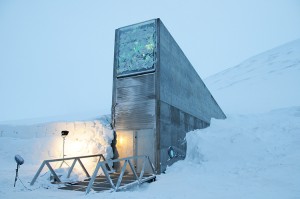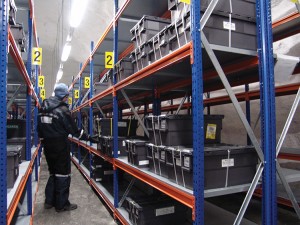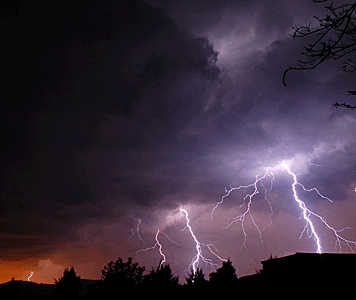1 Million Seeds at Svalbard
Friday, March 6th, 2020March 6, 2020
Last week, on February 24, the 1 millionth variety of seed was added to the Svalbard Global Seed Vault located on Spitsbergen, an island off the coast of Norway. The facility was designed as a “doomsday vault” to store seeds from millions of plants, including nearly all the world’s food crops. These seeds may be needed in the future to reestablish crops destroyed by major disasters.

Snowy hills surround the entrance to the Svalbard Global Seed Vault on Norway’s Spitsbergen Island. credit: Mari Tefre, Svalbard Global Seed Vault
The newest additions that put the vault over the million mark included samples of beans, corn, and squash from India, Mali, Peru, and the Cherokee Nation in the United States. The new contributions also included clover, grass, and herb seeds from the United Kingdom’s Kew Gardens.
The Svalbard Global Seed Vault is the largest seed storage facility in the world. The vault can hold up to 4.5 million seed samples from wild and domesticated plants.. Many of the seeds come from crop varieties that are not widely grown, as well as from staple food crops. The genetic diversity in the stored seeds may help scientists develop new crop varieties that can thrive in climates and soil conditions different from those that exist today. The Svalbard facility opened in 2008.

Seeds are stored in boxes in the cold, dry environment of the Svalbard Global Seed Vault. credit: © Mari Tefre, Svalbard Global Seed Vault
The plan for a doomsday vault originated with the United Nations International Seed Treaty of 2001. The site at Spitsbergen was chosen because it is an unlikely place for a disaster to occur. The site is remote, largely uninhabited, geologically stable, and naturally cold. The seed vault was built in an abandoned coal mine about 490 feet (150 meters) deep in the side of a mountain. The vault lies within permafrost, a layer of earth that remains frozen the year around. The vault is kept at a temperature of –0.4 ºF (–18 ºC). The low temperature keeps the seeds viable—that is, able to germinate under proper conditions—for long periods.
There are many smaller seed vaults in other parts of the world. Such facilities, often called gene banks, help preserve genetic diversity in food crops. The Svalbard facility serves as a global reserve gene bank. In 2015, researchers removed some seeds from the Svalbard vault for the first time. They used some of the seeds to replenish the supply at a gene bank in Aleppo, Syria. Some of that gene bank’s seeds had been lost during Syria’s ongoing civil war.
The Svalbard Global Seed Vault is owned and administered by the government of Norway. Daily operations are overseen by the Nordic Genetic Resource Centre, a Scandinavian organization dedicated to the sustainable use of plants, farm animals, and forests. Sustainability is the ability of an activity or way of life to continue over the long term without exhausting resources, damaging the environment, or harming people. The Crop Trust, established by the United Nations Food and Agriculture Organization, helps fund the operation of the seed vault. The seeds stored at the Svalbard Global Seed Vault are owned by the gene banks that have deposited them there.



